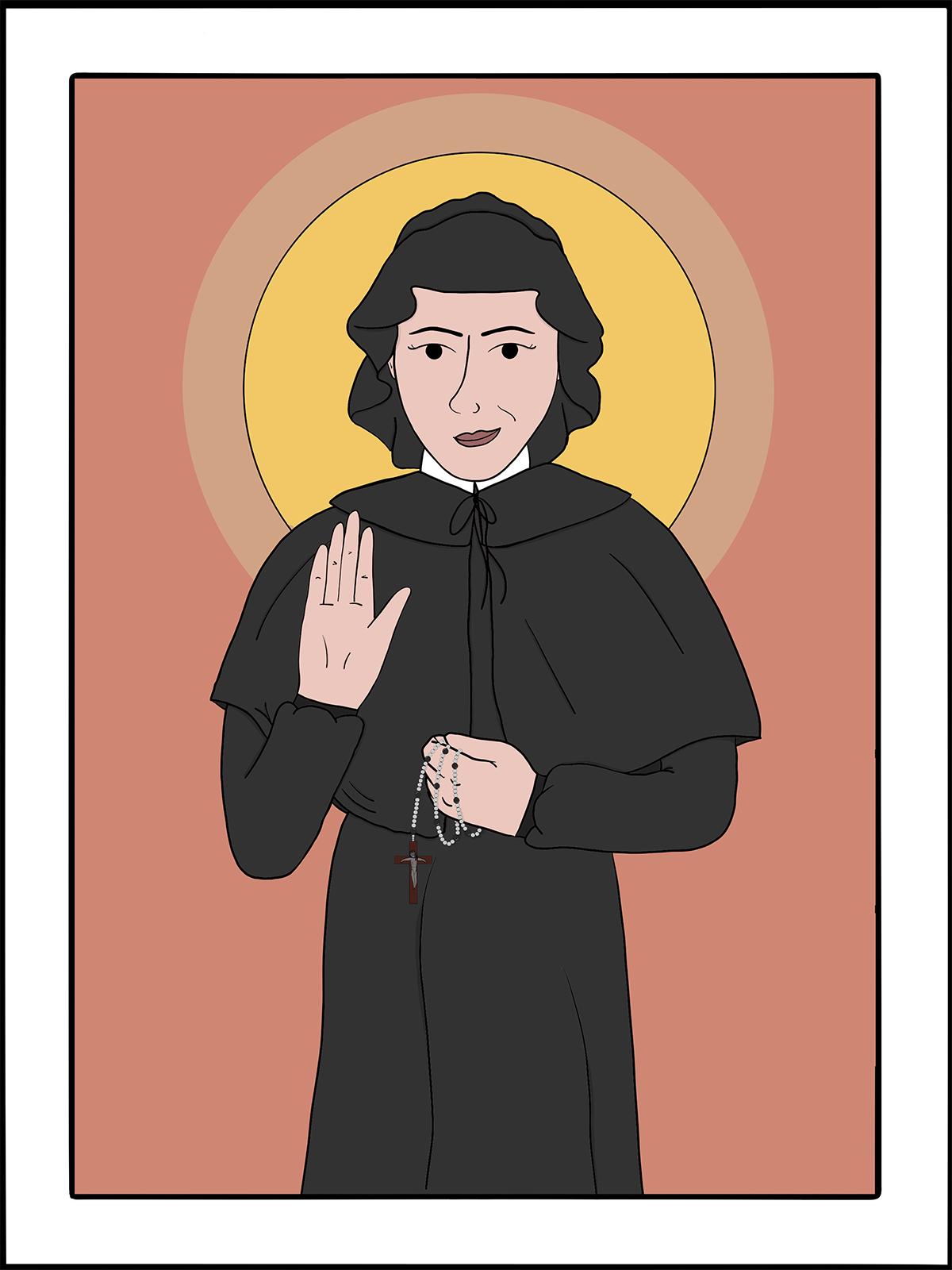
January 4
Elizabeth Ann Seton
Vowed Religious and Educator, 1821 AD
art by Rev. Kirsten Kohr of Uhrichsville, OhioGive us grace, O God, to love you in all things and above all things; that, following the example of your servant Elizabeth Ann Seton, we might express our love for you in the service of others. Through Jesus Christ our Lord, who lives and reigns with you and the Holy Spirit, one God, in glory everlasting. Amen.
Elizabeth Ann Seton was the founder of the Sisters of Charity, the first community of sisters established in the United States.
Elizabeth was born in New York City on August 28, 1774, and was raised as an Episcopalian. She endured a turbulent childhood and suffered severe bouts of depression, but persevered by immersing herself in poetry, piano lessons, and devoted participation in the Episcopal Church. From a young age, she desired to help the sick and poor. In 1795, she married William Seton, and their family came to include five children. During this time, she also founded the Society for the Relief of Poor Widows with Small Children.
In 1801, however, the family business went bankrupt. In 1803, her husband developed symptoms of tuberculosis, and they set sail for Italy in the hopes that the warm climate might cure his disease. The Italian authorities, fearing yellow fever, quarantined them in a cold stone hospital for the dying. William soon died and left Elizabeth a young widow with five children and few resources. While struggling with these losses, she was befriended by Roman Catholics and, as a result, was drawn to the Catholic Church.
Returning to New York, she encountered bitter opposition from her Episcopalian family for her new religious leanings. With five children to support, she found herself alone and in financial straits. She turned to Catholic clergy for support and, in 1805, she formally became a member of the Catholic Church.
In 1806, she met Father Louis Dubourg, who wanted to start a congregation of women religious, patterned after the French Daughters of Charity of Saint Vincent de Paul. In 1809, Elizabeth took vows and became “Mother Seton” to a small community of seven women, known as the Sisters of Charity of Saint Joseph, who were dedicated to teaching. The sisters were given land in rural Maryland and, in 1810, they opened Saint Joseph’s Free School to educate needy girls. The sisters intertwined social ministry, education, and religious formation in all of their varied works. Out of the pioneering work of Elizabeth Seton, five independent communities of the Sisters of Charity now exist, offering ministry and care for the most vulnerable.
Elizabeth Ann Seton remained the superior of the Sisters of Charity until her death on January 4, 1821.
The legacy of the Sisters of Charity has left a lasting impact on the Episcopal Church as well as on the Catholic Church. The earliest Anglican religious orders for women used the rule of the Sisters of Charity as the basis for their own rules, and there have been Sisters of Charity in the Anglican Communion since 1869.
Excerpted directly from “Lesser Feasts and Fasts 2022,” p. 24-25.
Lessons and Psalm 2 Esdras 2:15-24
Psalm 119:105-112
Luke 14:15-23
Preface of the Incarnation

